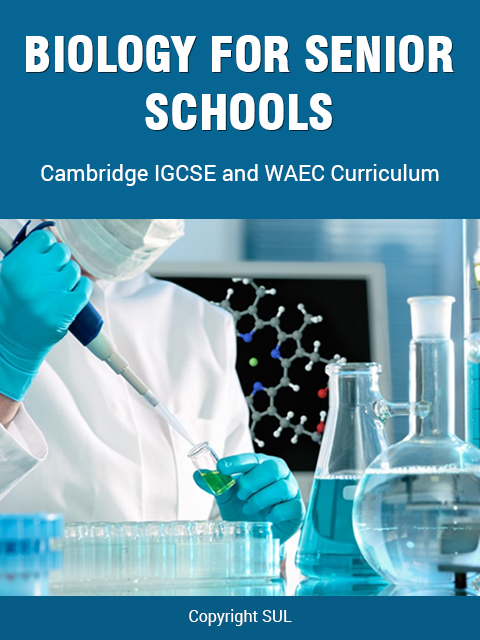
SMS Sent Successfully

Please Enter Mobile Number.
Books Details

Topics
1. Concept of Living
1.1 Classification: Living and non-living things
1.2 Classification of Living things into Kingdoms
1.3 Differences between Plants and Animals
1.4 Irritability as a basic characteristic of protoplasm.
1.5 Types of responses: taxis and nastism.
1.6 Environmental factors that evoke responses; temperature, pH etc.
2. Organization of life
2.1 Levels of organization: cell, Tissue, Organ bulb, rhizome and heart, and System/Organ System organ) bulb, rhizome and heart.
2.2 Complexity of organization in higher organisms
3. Forms in which living cells exist
3.1 Single and free-living: Amoeba, Paramecium, Euglena, and Chlamydomonas
3.2 Colony: Volvox
3.3 Filament: Spirogyra
3.4 Part of a living organism: Cheek cells, onion root tip cells and epidermis of fleshy leaves.
4. Cells
4.1 Cell structure and functions of cell components.
4.2 Similarities and differences between plant and animal cells.
4.3. Cell theory
4.4 The Cell in Its Environment: Physical and Biophysical Processes
4.5 Diffusion, Osmosis and Active transport
5. Properties and functions of the living cell
5.1 Nutrition: Autotrophic (photosynthesis), Heterotrophic (holozoic)
5.2 Cellular respiration: Definition and processes of aerobic respiration, anaerobic respiration, and energy release
5.3 Excretion: Excretion in single-celled aquatic organisms, Diffusion by body surface and by contractile vacuole, Waste products of metabolism.
5.4 Growth: Basis of growth - Cell division (mitosis), Enlargement and Differentiation, Aspects of growth: Increase in dry weight, Irreversible increase in size and length and increase in number of cells, Regions of fastest growth in plants, Influence of growth hormones and auxins, Growth curvatures (Tropisms)
5.5 Development: Enlargement and Differentiation.
5.6 Movement: Organelles for movement: Cilia and Flagella, Cyclosis
5.7 Reproduction: Types of reproduction, Asexual: fission, budding and vegetative propagation, Sexual: Conjugation, formation of male and female gametes (gametogenesis), fusion of gametes (fertilization)
6. Tissues and supporting systems
6.1 Skeleton and supporting systems in animals: Biological significance
6.2 Different types of supporting tissues in plants: Main features and Functions
7. Transport System
7.1 Need for transport: surface area/volume ratio, substances have to move greater distances
7.2 Transport in animals: Structure of the heart, arteries, veins and capillaries, Composition and function of blood and lymph, Materials for transport: excretory products, gases, digested food, and other nutrients
7.3 Transport in plants: Uptake and movement of water and mineral salts in plants, Translocation, Transpiration
8. Respiratory System
8.1 Body surface: cutaneous, gills and lungs
8.2 Mechanisms of gaseous exchange in fish, toad, mammals and plants.
9. Excretory Systems and Mechanisms
9.1 Types of excretory systems: Kidney, stomata and lenticels
9.2 Kidney: Structure and functions
9.3 Diseases of the kidney: Nephritis, kidney stone and diuresis, their effects and remedies.
10. Regulation of Internal Environment (Homeostasis)
10.1 Liver: Functions
10.2 Diseases of the liver: infective hepatitis, cancer of the liver and gall stones. Their effects and remedies.
11. Hormonal Coordination
11.1 Animal hormones: Site of secretion, functions and effects of over and under- secretion
11.2 Plant hormones
12. Nervous Coordination
12.1 The central nervous system: Components of the central nervous system
12.2 Parts of the brain and their functions; cerebrum, cerebellum, medulla oblongata, hypothalamus and their functions.
12.3 Structure and function of the Spinal Cord.
12.4 Peripheral Nervous System: Somatic Nervous System, Autonomic nervous system, Structure and functions of the neurone, Classification of neurones.
13. Sense Organs
13.1 Structure and function of eye
13.2 Structure and function of ear
13.3 Structure and function of nose
13.4 Structure and function of the Tongue
13.5 Structure and function of the Skin
14. Reproductive system of mammals
14.1 Structure and function of male and female reproductive systems
14.2 Metamorphosis in insects
14.3 Comparison of reproduction in fish, amphibian, reptile, bird and mammal
14.4 Courtship behaviour in animals: Pairing, Display e.g. peacocks, Territoriality, Seasonal migration associated with breeding in herrings, eels and birds.
14.5 Adaptive features in a developing animal: Yolk in egg of fish, toad and birds for nourishment
14.6 Placenta in animals, Essential factors which affect developing embryo.
15. Reproductive system of plants
15.1 Reproduction in flowering plants: Arrangements of floral parts of an insect-pollinated flower and a wind-pollinated flower
15.2 Structure and function of the male and female parts of a flower
15.3 Germination of seeds, types of germination
15.4 Pollination in Plants
15.5 Process of development of zygote in flowering plants:
15.6 Types of fruits: Classification, Structure of fruits
15.7 Dispersal of fruits and seeds: Agents of dispersal
16. Plant Nutrition
16.1 Photosynthesis: Process and its chemical equation, Light and dark reactions, Materials, Conditions, Evidence
16.2 Mineral requirement of plants: Macro and micro-nutrients, Soil and atmosphere as sources of mineral elements
16.3 Nitrogen cycle
16.4 Modes of nutrition: autotrophic, chemosynthetic, carnivorous plants
17. Animal Nutrition
17.1 Food substances: classes and sources
17.2 Balanced diet and its importance, Food tests
17.3 Digestive enzymes: Classes, characteristics and functions
17.4 Modes of Nutrition: Autotrophic, Heterotrophic, symbiotic and saprophytic
17.5 Alimentary System: Alimentary tract of different animals
17.6 Dental Formula
17.7 Feeding habits in protozoa and mammals: Carnivorous, herbivorous and omnivorous
17.8 Modifications and mechanisms associated with the following habits: filter feeding, fluid feeding, feeding adaptation in insects, saprophytic feeding, parasitic feeding etc.
18. Basic Ecological Concepts
18.1 Ecosystem: Components of the ecosystem and sizes, lithosphere, hydrosphere, atmosphere, niche
18.2 Ecological factors
18.3 Simple Measurement of Ecological Factors
18.4 Food webs and trophic levels
18.5 Energy flow
18.6 Decomposition in nature
18.7 Ecological Management: Biological Associations
19. Ecology of population
19.1 Ecological succession
19.2 Primary succession: Succession in terrestrial and aquatic habitats
19.3 Secondary succession, climax of the succession: characteristics of a stable ecosystem
19.4 Population Studies by Sampling population size, dominance, density
19.5 Factors that affect population size: natality, mortality, emigration, immigration, food, shortage, predation, competition and diseases
19.6 Preservation and storage of foods
19.7 The life of selected insects: Weevils and cotton strainers
19.8 Control of pests
20. Micro-organisms
20.1 Microorganisms around us
20.2 Public Health: The importance of Refuse and sewage disposal
21. Conservation of Natural Resources
21.1 Energy transformation in nature: Energy loss in the ecosystem
21.2 Solar radiation: its intake and loss at the earth's surface.
21.3 Energy loss in the biosphere.
21.4 Resources to be conserved: soil, water, wildlife, forest and minerals
21.5 Ways of ensuring conservation
22. Variation in Population
22.1 Morphological variations in the physical appearance of individuals: size, height and weight, colour (skin, eye, hair coat of animals), finger prints
22.2 Physiological Variations: Ability to roll tongue, Ability to taste phenylthiocarbamide (PTC), Blood groups (ABO) classification
22.3 Application of Variations
23. Biology of Heredity (Genetics)
23.1 Genetic terminologies
23.2 Transmission and expression of characteristics in organisms
23.3 Hereditary variation: Mendelian laws
23.4 Chromosomes: The basis of heredity
23.5 Probability in genetics (Hybrid formation)
23.6 Linkage, sex determination and sex linked characters
23.7 Application of the principles of heredity in Agriculture and Medicine
24. Adaptation for survival
24.1 Behavioral Adaptations in Social Animals: Termites, Bees.
24.2 Factors that bring about competition
24.3 Adaptive Colouration: Plants and animals
25. Structural Adaptation
25.1 Obtaining food
25.2 Protection and defense
26. Evolution
26.1 Evidence
26.2 Nutrient Cycling in Nature
26.3 Carbon Cycle: Process of carbon cycle, Importance of carbon in nature.
26.4 Ecological Management: Tolerance, Minimum and maximum range.
27. Habitats
27.1 Aquatic habitat: marine, estuarine fresh water
27.2 Terrestrial habitat: marsh, forest, grass land, arid land
27.3 Balance in Nature
27.4 Dynamic equilibrium population and population density.
28. Relevance of Biology to Agriculture
28.1 Classification of plants based on life cycle
28.2 Effects of agricultural practices on ecology
Confirmation
This book will be added to your library. Do you want to continue?
1Confirmation
Your Free trial Limit Exceeded.Would you like to buy it?
 0
0


 0
0


 English part II for Senior Schools
English part II for Senior Schools
 Financial Accounting for Senior Schools
Financial Accounting for Senior Schools
 Civic Education for Senior Schools
Civic Education for Senior Schools
 Chemistry for Senior Schools
Chemistry for Senior Schools
